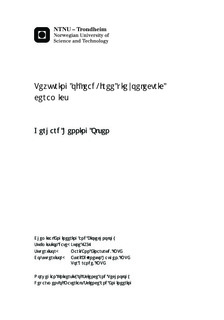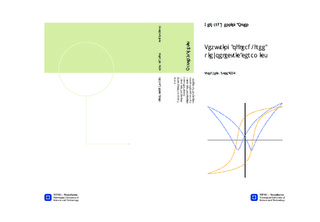| dc.contributor.advisor | Einarsrud, Mari-Ann | nb_NO |
| dc.contributor.advisor | Bjørnetun Haugen, Astri | nb_NO |
| dc.contributor.advisor | Grande, Tor | nb_NO |
| dc.contributor.author | Olsen, Gerhard Henning | nb_NO |
| dc.date.accessioned | 2014-12-19T13:26:39Z | |
| dc.date.available | 2014-12-19T13:26:39Z | |
| dc.date.created | 2012-11-08 | nb_NO |
| dc.date.issued | 2012 | nb_NO |
| dc.identifier | 566476 | nb_NO |
| dc.identifier | ntnudaim:7444 | nb_NO |
| dc.identifier.uri | http://hdl.handle.net/11250/249120 | |
| dc.description.abstract | A procedure for texturing of lead-free piezoelectric ceramics based on sodium potassium niobate (KNN) was investigated with respect to texturing procedure and choice of materials.Material compositions that were considered include KNN with and without addition of 0.5 mol% MnO, and KNN modified with Li and Ta (KNNLT), and Mn substituted into the A or B site of the perovskite structure. The two compositions KNN-Mn and KNNLT-Mn(A) compositions were further investigated as candidate materials for texturing.Textured samples of the two materials were made by tape casting and templated grain growth, using needle-shaped KNN particles as templates, while non-textured reference samples were made by conventional sintering of powders. Both textured and non-textured dense materials were characterized with respect to density, degree of texture and piezoelectric and dielectric properties. The non-textured materials sintered to high relative densities of 93.9 % for KNN-Mn and 96.7 % for KNNLT-Mn(A). A converse piezoelectric coefficient of over 250 pm/V was measured for non-textured KNNLT-Mn(A), and around 200 pm/V for KNN-Mn.Texturing led to a lower relative density of both compositions, 89.1 % for KNN-Mn and 92.1 % for KNNLT-Mn(A). The piezoelectric performance of KNN-Mn was not significantly affected by the texturing procedure, while the piezoelectric performance of KNNLT-Mn(A) became significantly poorer. This is due to the formation of a secondary phase in KNNLT-Mn(A) during sintering, which is probably caused by the compositional mismatch between the templates and the fine-grained matrix powder.Based on the results, and a theoretical consideration of the texturing procedure, a different choice of template particles is suggested for further work on texturing of KNN-based materials. | nb_NO |
| dc.language | eng | nb_NO |
| dc.publisher | Institutt for materialteknologi | nb_NO |
| dc.subject | ntnudaim:7444 | no_NO |
| dc.subject | MTKJ Industriell kjemi og bioteknologi | no_NO |
| dc.subject | Materialer for energiteknologi | no_NO |
| dc.title | Texturing of lead-free piezoelectric ceramics | nb_NO |
| dc.type | Master thesis | nb_NO |
| dc.source.pagenumber | 94 | nb_NO |
| dc.contributor.department | Norges teknisk-naturvitenskapelige universitet, Fakultet for naturvitenskap og teknologi, Institutt for materialteknologi | nb_NO |

